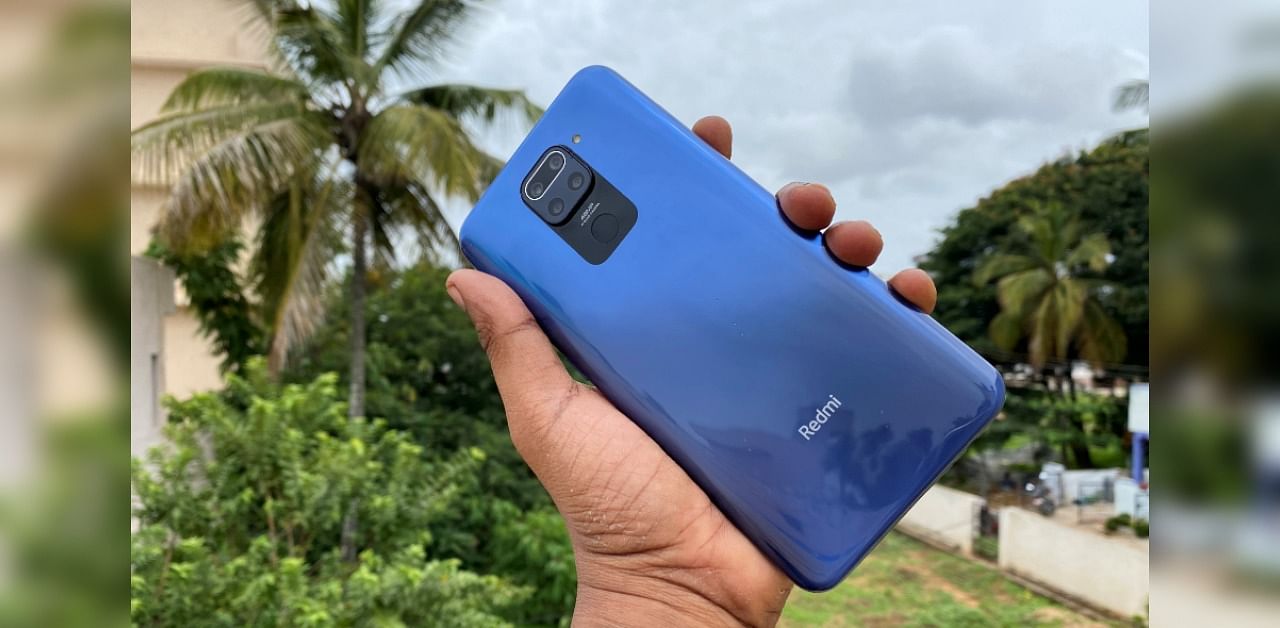
Xiaomi launched the Redmi Note 9 Pro, 9 Pro Max way back in March, but for reasons best known to the company, did not reveal the generic model. This strategy worked well for Xiaomi, the prolonged shelf time for Pro models got good attention and made good sales. Finally, the Redmi Note 9 made its debut in late July.
On paper, it has one of the best features for a price starting at Rs 11,999. I have been using the Xiaomi phone for a week and here are my thoughts on the Redmi Note 9.
Design, build quality and display
Xiaomi's Redmi Note 9 has borrowed some design from the Note 9 Pro series. It features curved square-shaped quad-camera module with cute Wall-E like eyes on the back. Just below, it houses a fingerprint sensor, which is easily accessible even for people with small hands. Also, the camera bump makes it impossible for the finger to accidentally touch the lens and that gets my thumbs up for the genius design language.
Our Pebble Grey colour variant looks visually appealing with the bluish tint. The device's back exudes a glass-like feel, but its polycarbonate material. When held in hand, it offers a good grip for the fingers and also, repels sweaty smudges to an extent. It is only visible when looked at from a certain angle.
Another plus point of the Redmi Note 9 is its triple-slot tray. It is placed on the left side and comes with three spots-- two for nano-type SIMs and a dedicated microSD. With this, design people don't have a compromise between the second SIM or extra storage.
On the front, the Redmi Note 9 is very different from the Pro series. The former features dot display, wherein the camera is placed in the top left corner, whereas the latter has the snapper in the top-middle position like a water drop. I actually like the Note 9's design as it is less obstructive.
It sports a 6 .53-inch full HD+(2340 × 1080p) display with a peak brightness of 450 nits, 1000:1 contrast ratio, 19.5:9 aspect ratio, and comes with anti-oil and an anti-fingerprint protective coating.
With the wide 91.4% screen-to-body ratio and the bright IPS LCD panel, the Xiaomi phone offers a pleasant viewing experience be it watching TV series on a multimedia streaming platform or playing games.
The Redmi Note 9 has TÜV Rheinland Low Blue Light certification and have to say, I did not face any pressing issue while viewing the content in the dark and it was pleasantly all long the testing period.
It should be noted that the device comes with Corning Gorilla Glass 5 shield, which by the way is used in some of the most expensive phones in the market. Additionally, the company has fitted screen-guard on top of the display, so that the customer doesn't have to spend extra bucks on screen protection.
This kind of concern for screen durability is very rare among mobile brands in India and this is how you build the reputation and establish a long-lasting relation with the customer.
Performance:
The Redmi Note 9 comes with 12nm class MediaTek Helio G85 octa-core (2.0GHz Cortex A75 x 2 + 1.8GHz Cortex A55 x 6) backed by 1000MHz ARM G52 MC2 graphics engine with 4GB/6GB RAM (LPDDR4X) and 64GB/128GB storage (eMMC 5.1).
Our review unit features 6GB RAM+128GB storage. During the entire testing period, it did not show any sign of lag-ness while doing day-to-day chores like internet browsing, binge-watching videos on OTT (Over-The-Top) apps, photography sessions, or other stuff. It worked buttery smooth and even while playing power intense games such as Asphalt 9: Legends, the device didn't overheat nor exhibit too much stuttering.
On Geekbench 5.0, the Redmi Note 9 scored 359 and 1341 points on single-core and multi-core tests, respectively on Geekbench 5.0. Its good for a phone under Rs 15,000.
Among the several custom user-interface in the market, I love the Xiaomi's MIUI and the credit goes to the community forum. The latter attracts millions of users and offer feedback on performance, bugs and other stuff about the MIUI and it gets duly reported to the software team of the company. And, if they deem it urgent, they try to fix any issues with a quick patch.
Also, MIUI offers more value-added features than the stock Android and people love it. Also, it is easy even for a rookie to get the hang of the interface and look for new features in the settings very quickly compared to other branded phones.
Furthermore, it also offers the old three-button (back, home and previous apps) interface, which most people and also new full-screen gesture feature, which can be enabled and disabled in the Settings >> Additional settings >> Full-screen display.
And yes, Xiaomi has announced to bring the latest MIUI 12 with new features to the Redmi Note 9 in a few days.
As far as the security is concerned, the fingerprint sensor responds faster and the False Rejection Ratio (FRR) is also is very low. And, the face unlock works fine during the natural light condition.
Camera:
Xiaomi's Redmi Note 9 houses a quad-camera-- main 48MP (with Samsung ISOCELL Bright GM1 sensor, f/1.79 aperture, PDAF, EIS, 0.8μm pixel size, EIS -Electronic Image Stabiliser) + 8MP ultra-wide angle (118-degree lens with f/2.2 aperture) + 2MP macro lens+ 2MP depth sensor (with f/2.4 aperture) backed by an LED flash.
Xiaomi's phone takes really good images in the natural light conditions be it the sunny afternoon or in the evening twilight. However, while capturing flowers with colour pink and red shades, the resultant images do show saturation, but I can't complain, as they make the image good worthy to be shared on social media platforms.
Also, you should try the sky filters and it is one of the best value-added features I love in Xiaomi phones. Even the. ultra-wide angle shots, macro and low-light mode pictures are impressive for its asking price.
On the front, it features 13MP with f/2.25 aperture and yes, it takes really good selfies and offers a plethora of filters to enhance the selfie photography experience.
Battery:
The Redmi Note 9 comes with a 5,020mAh battery and a 22.5W charger in the box.
During the testing, the Xiaomi phone lasted more than a day under normal usage. Also, if you are binging too much on videos through mobile data, it will drain faster, however, on the Wi-Fi, the device lasts longer. Another interesting aspect of the Redmi Note 9 is that it supports 9W reverse charging. You can use it as a power bank to charge other phones.
It should be noted that Xiaomi has throttled the Redmi Note 9's 22.5W charger to only 18W through a software lock, as the company wants to do more testing. So, for now, it takes a little over two hours to fully charge from zero to 100-percent.
"To enable 22.5W charging, we need to do additional lab and field tests, which have been put on hold due to unforeseen circumstances. We're working towards getting a powerful charging experience and will soon look at rolling out a software update which will enable 22.5W charging capabilities on Redmi Note 9," the company said.
Once 22.5W charging is enabled with a firmware patch, the charging time is expected to reduce by around 20 to 15 minutes.
Final thoughts:
Xiaomi's Redmi Note 9 excels in pure performance and also the camera hardware is just fantastic, much better than any other brand in its class.
Pros
Good display
Powerful CPU configuration for its price
Excellent photography hardware
Long-lasting battery
Cons
Xiaomi Redmi Note 9 not easily available for consumers to buy on the e-commerce sites
Get the latest news on new launches, gadget reviews, apps, cybersecurity, and more on personal technology only on DH Tech.
